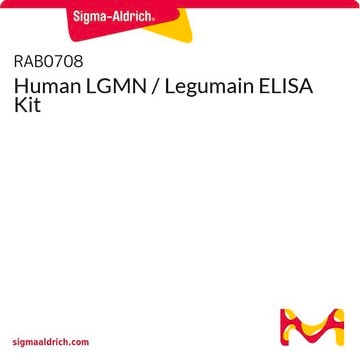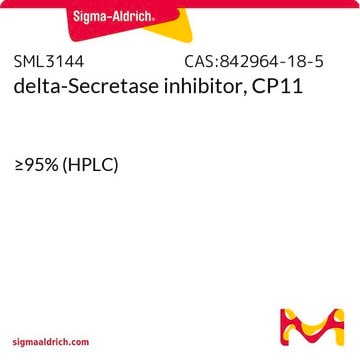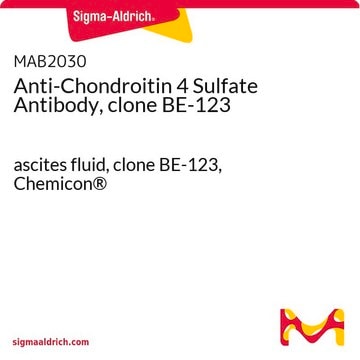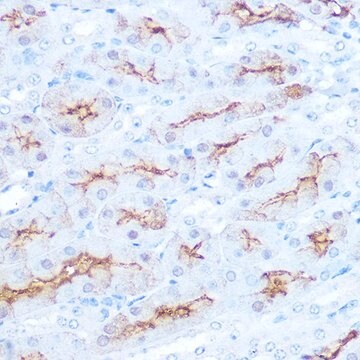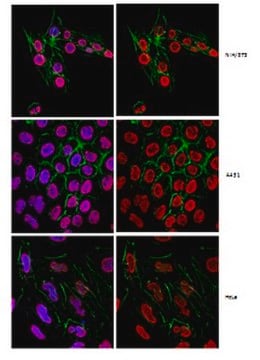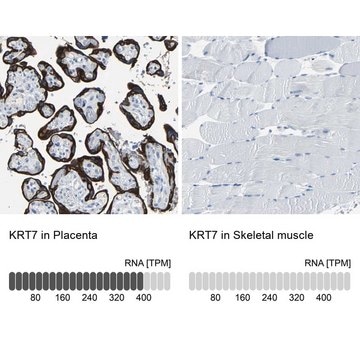ABN2270
Anti-phospho AEP (Ser226)
from rabbit
Synonim(y):
Legumain, Asparaginyl endopeptidase, Protease cysteine 1, Delta Secretase
About This Item
Polecane produkty
pochodzenie biologiczne
rabbit
forma przeciwciała
affinity isolated antibody
rodzaj przeciwciała
primary antibodies
klon
polyclonal
reaktywność gatunkowa
human
opakowanie
antibody small pack of 25 μg
metody
activity assay: suitable
immunofluorescence: suitable
western blot: suitable
izotyp
IgG
numer dostępu NCBI
numer dostępu UniProt
docelowa modyfikacja potranslacyjna
phosphorylation (pSer226)
Opis ogólny
Specyficzność
Immunogen
Zastosowanie
Neuroscience
Immunofluorescence Analysis: A representative lot detected phospho AEP (Ser226) in Immunofluorescence applications (Wang, Z.H., et. al. (2017). Mol Cell. 67(5):812-825).
Kinase Assay: A representative lot detected phospho AEP (Ser226) in HEK293 cells treated with SRPK2 and in vitro kinase assays (Wang, Z.H., et. al. (2017). Mol Cell. 67(5):812-825).
Jakość
Western Blotting Analysis: A 1:500 dilution of this antibody detected phospho AEP (Ser226) in lysates from HEK293 cells co-transfected mammalian GST-tagged (mGST) AEP and wild-type (WT) SRPK2, but not in cells co-transfected with knockdown (KD) SRPK2.
Opis wartości docelowych
Postać fizyczna
Przechowywanie i stabilność
Inne uwagi
Oświadczenie o zrzeczeniu się odpowiedzialności
Not finding the right product?
Try our Narzędzie selektora produktów.
Certyfikaty analizy (CoA)
Poszukaj Certyfikaty analizy (CoA), wpisując numer partii/serii produktów. Numery serii i partii można znaleźć na etykiecie produktu po słowach „seria” lub „partia”.
Masz już ten produkt?
Dokumenty związane z niedawno zakupionymi produktami zostały zamieszczone w Bibliotece dokumentów.
Nasz zespół naukowców ma doświadczenie we wszystkich obszarach badań, w tym w naukach przyrodniczych, materiałoznawstwie, syntezie chemicznej, chromatografii, analityce i wielu innych dziedzinach.
Skontaktuj się z zespołem ds. pomocy technicznej